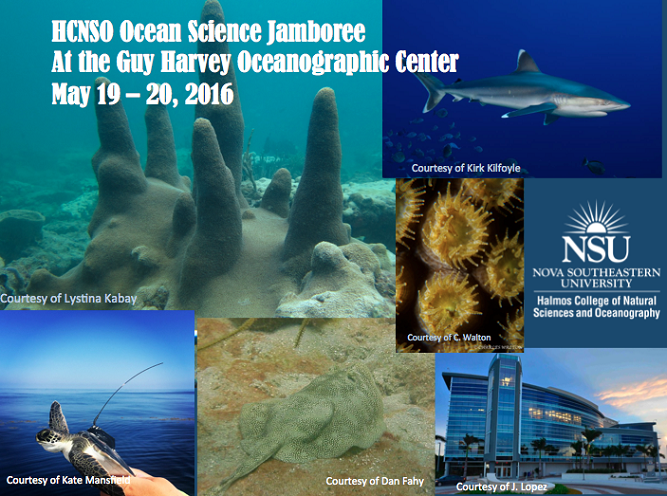Coral Research in the Tropical Eastern Pacific Ocean
Location
Guy Harvey Oceanographic Center Facility
Start
5-20-2016 5:00 PM
End
5-20-2016 5:15 PM
Abstract
Coral reefs and coral communities occur sporadically in the eastern tropical Pacific Ocean from the southern Gulf of California, Mexico to northern Peru. This spans a distance of approximately 4,600 km, from N25.00° W 110.56° to S02.50° W080.86°. My research primarily focusses on free-living coral communities at the latitudinal extremes of this region, to the north near La Paz, Mexico in the southwest Gulf of California and to the south in the Galápagos Islands, Ecuador. Free-living coral communities are composed of corals that inhabit unconsolidated coarse rubble and are not attached to the substrata. They increase the 3-dimensional complexity of these areas by centimeters, but do not form the high-relief (meter-high) structures of coral reefs. In the Gulf of California, these communities are composed of the endemic Portites sverdrupi, and two fungiid corals, Diaseris distorta and Cycloseris curvata. Both Porites and Diaseris communities exhibited significant increases in coral cover from 2011-2014 and 2008-2014 respectively. In the Galapagos Islands, a small community of the branching coral Psammocora stellata showed increased colony counts and total tissue surface area from 2004-2011, and living and dead populations of the fungiid Cycloseris curvata were described at opposite ends of the archipelago. An additional line of research concerns the description of a monoclonal population of the important reef-building coral Pocillopora damicornis in the largest known aggregation (>1,600 colonies) of this species in the Archipelago. Relationships to associated species and implications in ecological resilience provide meaningful data for the effective management of these important natural resources.
Coral Research in the Tropical Eastern Pacific Ocean
Guy Harvey Oceanographic Center Facility
Coral reefs and coral communities occur sporadically in the eastern tropical Pacific Ocean from the southern Gulf of California, Mexico to northern Peru. This spans a distance of approximately 4,600 km, from N25.00° W 110.56° to S02.50° W080.86°. My research primarily focusses on free-living coral communities at the latitudinal extremes of this region, to the north near La Paz, Mexico in the southwest Gulf of California and to the south in the Galápagos Islands, Ecuador. Free-living coral communities are composed of corals that inhabit unconsolidated coarse rubble and are not attached to the substrata. They increase the 3-dimensional complexity of these areas by centimeters, but do not form the high-relief (meter-high) structures of coral reefs. In the Gulf of California, these communities are composed of the endemic Portites sverdrupi, and two fungiid corals, Diaseris distorta and Cycloseris curvata. Both Porites and Diaseris communities exhibited significant increases in coral cover from 2011-2014 and 2008-2014 respectively. In the Galapagos Islands, a small community of the branching coral Psammocora stellata showed increased colony counts and total tissue surface area from 2004-2011, and living and dead populations of the fungiid Cycloseris curvata were described at opposite ends of the archipelago. An additional line of research concerns the description of a monoclonal population of the important reef-building coral Pocillopora damicornis in the largest known aggregation (>1,600 colonies) of this species in the Archipelago. Relationships to associated species and implications in ecological resilience provide meaningful data for the effective management of these important natural resources.


